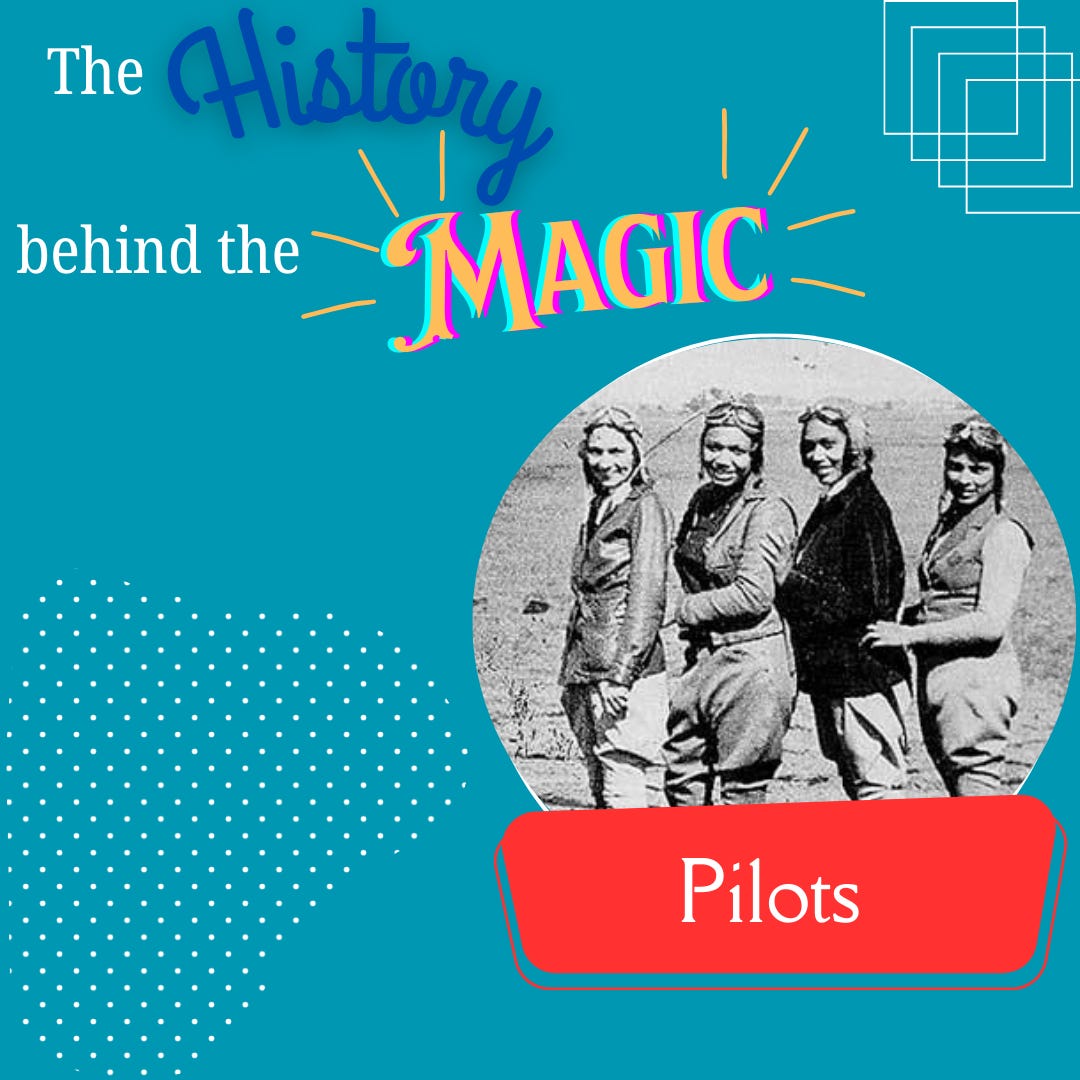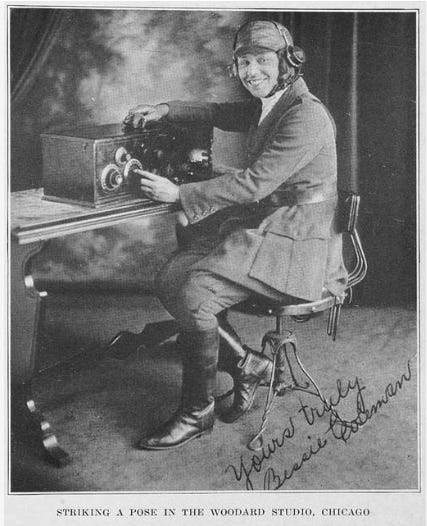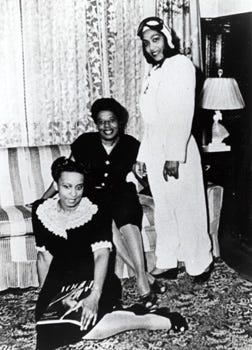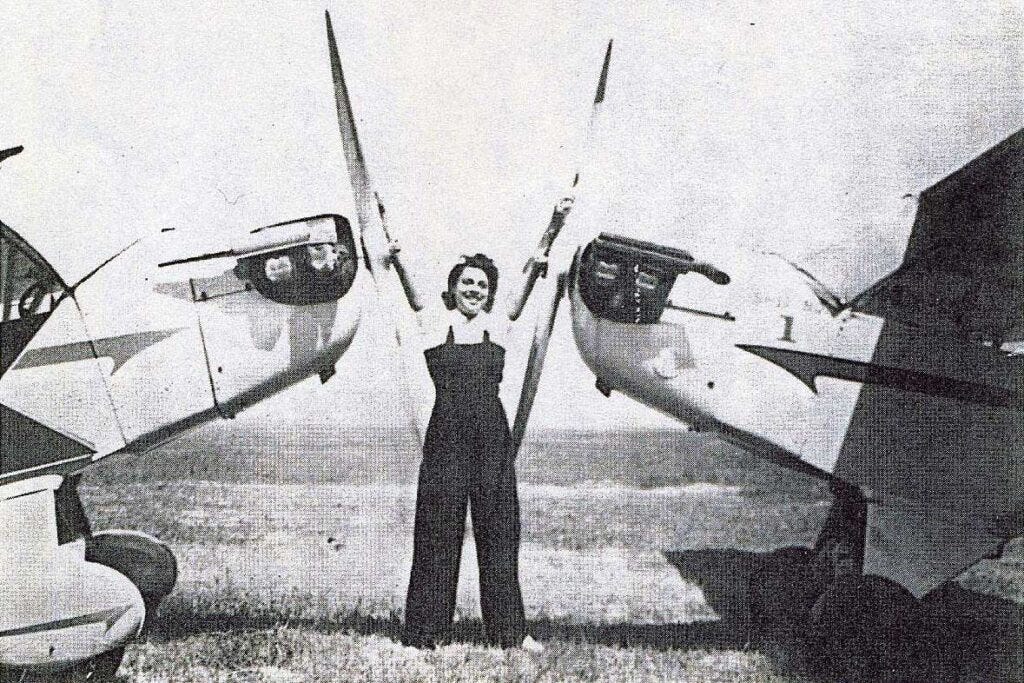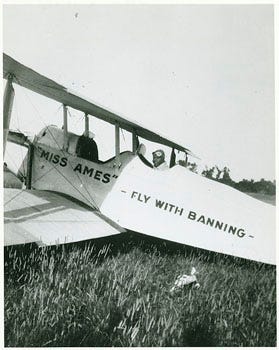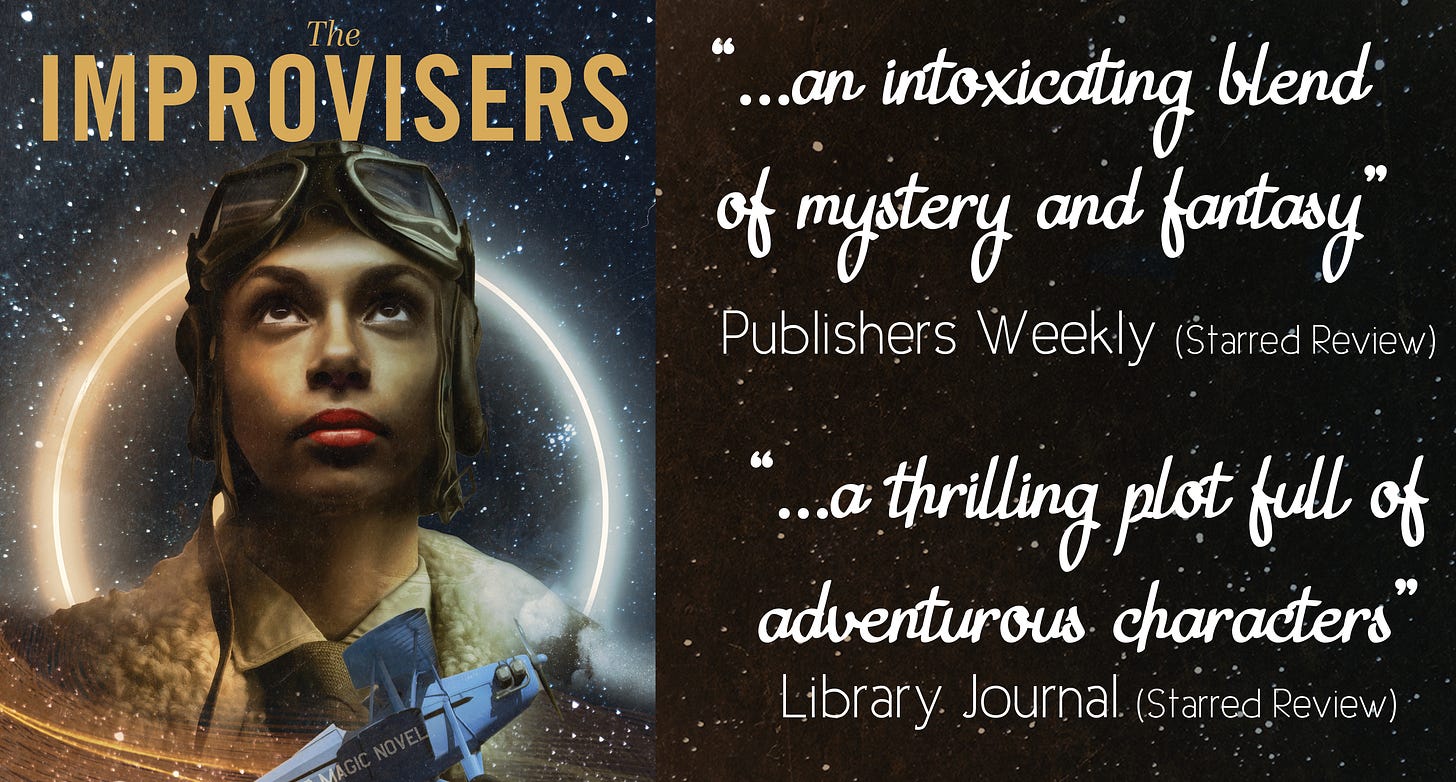The History Behind the Magic: Inspiring Pilots
Part One of behind the scenes tidbits for The Improvisers
I always knew that Velma Frye was going to a be a pilot. The stunning feats and wonders of planes was one of the most intriguing elements in the era I set The Improvisers. I knew the protagonist for the book would be daring, headstrong, and unafraid to plunge into danger. And what better empathized that than a pilot in an age when planes were only a few decades old?
I have long heard about Bessie Coleman, who famously went to Paris to obtain a pilot’s license in 1921 because she couldn’t get one in the US due to racial discrimination. Returning she was an instant celebrity, performing and exhibiting in air shows to great acclaim. She made living barnstorming, performing daring stunts to amaze the crowds as well as doing a lecture tour about aviation. Her death in 1926 in a training accident cut short a promising career but her legacy was already well-established.
While Coleman looms large when talking about early pilots, she’s far from the only one. Like how she continues to inspire today, she inspired many of her contemporaries to take to the sky, by proving it was possible in the first place.
Janet Harmon Bragg took an interest in aviation by seeing a poster “Birds learn to fly, why can’t you?” Seeking an aviation school, she took classes taught by Cornelius Coffey and John Robinson, Black pilots who were auto mechanics turned licensed pilots. Joining the Challenger Air Pilot Association (or Challenger Areo Club) that was led by the two men, Harmon Bragg would eventually buy the club a plane and assist in efforts to build a small private airport for the club to practice at. Harmon Bragg obtained a private pilot license in 1934 and a commercial license in 1943. She also wrote a weekly column for the Chicago Defender, called “Negro Aviation” detailing information about flight and avaiation which in turn led to increase enrollment at the Coffey School of Aeronautics.
When WWII broke out she applied to be a WASP (Women’s Air Service Pilot) but was rejected on the account of her race. And when she applied to Tuskegee Airmen, was rejected for her gender. Despite these setbacks she would continue flying and remain fierce advocate for aviation.
In 1936 Willa Brown famously strode into the offices of the Chicago Defender in her flight gear to get advertisement for the Challengers’ upcoming flight show to drum up publicity and interest in the community. Obtaining a pilot license in 1938 and commercial license in 1939, she soon became a founding member of several aviator groups, such as the National Airmen’s Association of America often taking leadership roles.
With her husband, Cornelius Coffey, Brown played a key role in successfully lobbying the government to consider including Coffey School of Aeronautics into Civilian Pilot Training Program. The Coffey shcool trained over 200 students and instructors who would became Tuskegee Airmen. Brown’s also arranged for the school to be part of the Civil Air Patrol and rose to the rank of lieutenant in the patrol, making her the first Black officer.
A few other pilots of interest
Eugene Bullard fought in WWI with the Foreign Legion and started flying due to a bet. When the US entered the war, he was not accepted into the American air service as only white pilots were chosen. Embraced as hero and celebrity in France, he would run nightclubs during the interwar period. When WW2 started up he would fly again, but an injury ended his service and he would eventually return to the US.
James Banning was the first black pilot to make a transcontinental flight across the US in 1932. While flight time was just over 41 hours, it took 21 days to make the trip given the need to raise money for each leg of the trip for maintenance and fuel. He would die four months later after this feat when the plane he was in stalled and crashed in during an air show.
Herbert Julian first emerged on the scene in 1922 when he did a parachute jump in the same show as headliner Bessie Coleman. Famed for his flamboyant style he was part of the flying circus called the Five Blackbirds, and performed many barnstorming feats around the country. While a talented pilot, his skills are often overshadowed by controversy most notably in Ethiopia in the 1930s where he came to blows with John Robinson when both were in the country to assist Ethiopians against Fascist Italy. The disagreement with Robinson lead to Julian being forced to leave. Julian’s career as a pilot would peter out following WW2 and he later would become an arms dealer in the 1950s and 1960s.
Part Two: Air Mail




